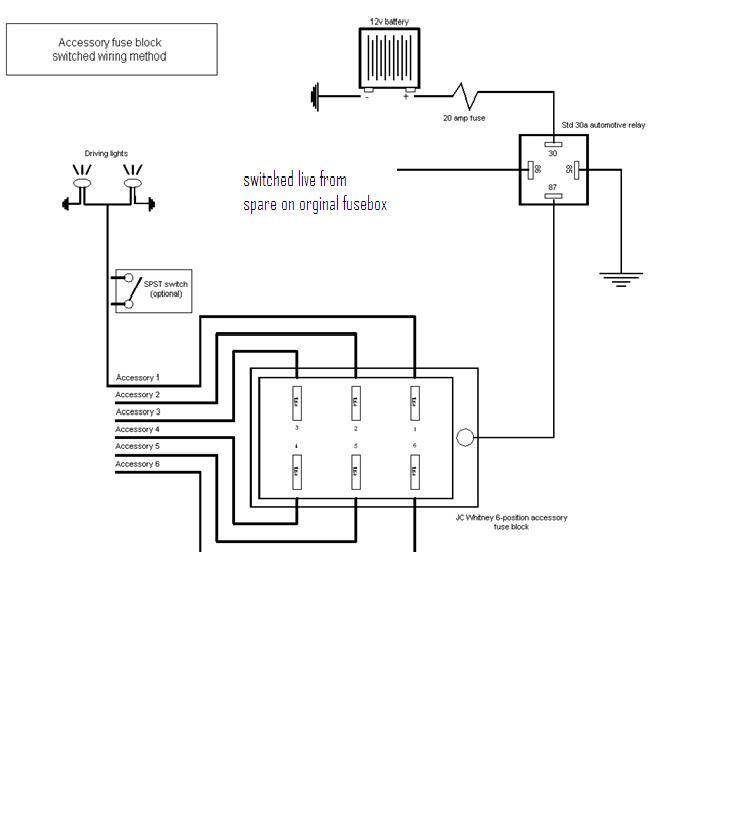now....go easy on me!

im going to (try &) fit a secondry fusebox to both my bikes to run satnavs , heated grips, lights and so on. (ive been putting this off for SO long)
I understand switched lives but im a bit confused on relays. (i know what they do)
On the Fazers fusebox there is a spare switched live. My orginal plan was to get a cheap halfords blade style fusebox and connect it via this spare switched live. i would then connect all my accessories to this new fusebox and they would all be switched live.
So in my head.....my "secondry" fusebox is only powered when the ignition is on....which is what i wont.
but...every one (the people who know what there doing!) keep banging on about Relays. So looked on the net....got more confused....adapted a drawing off another site and now im here

So.....is this drawing correct?
If so.....why the Relays?

in the drawing it shows another relay on the driving lights...why?
